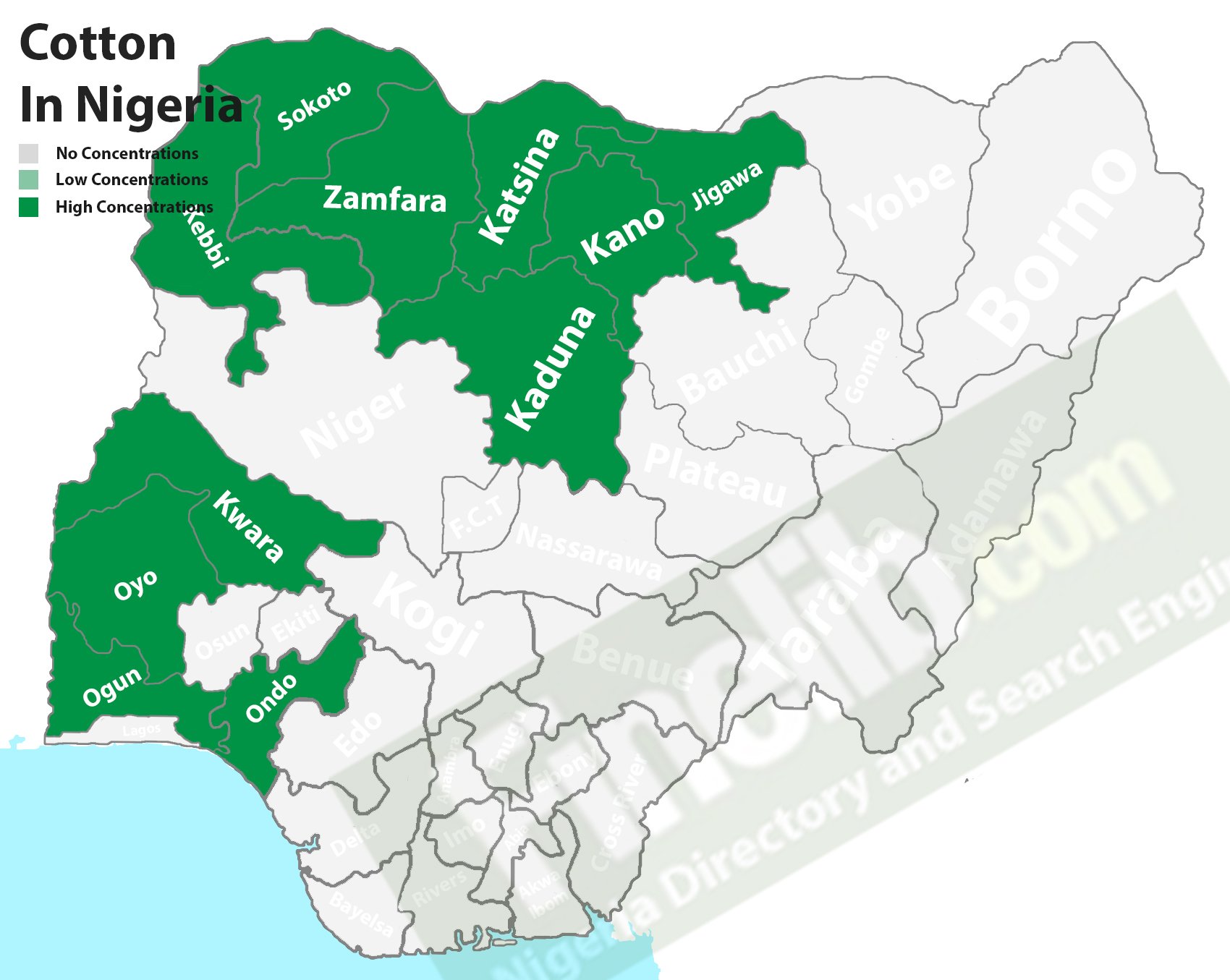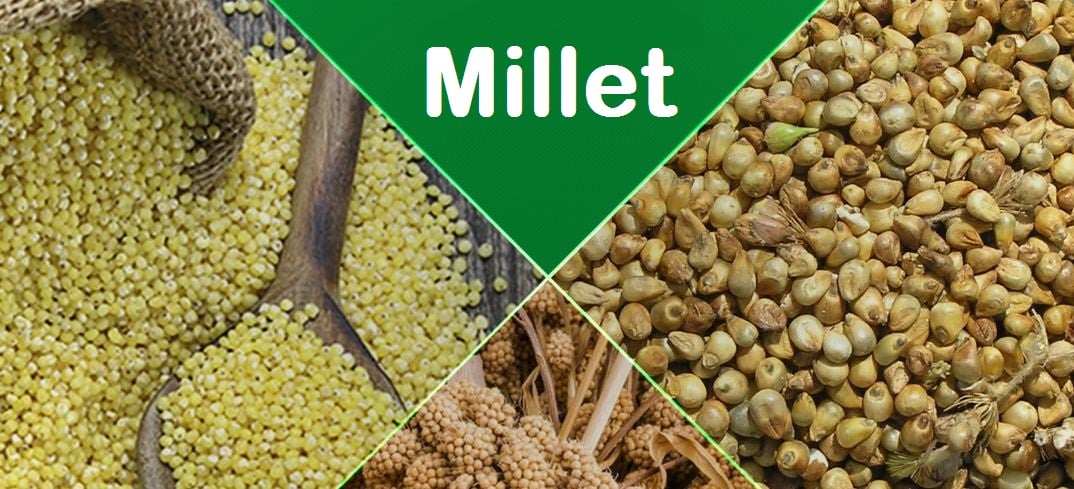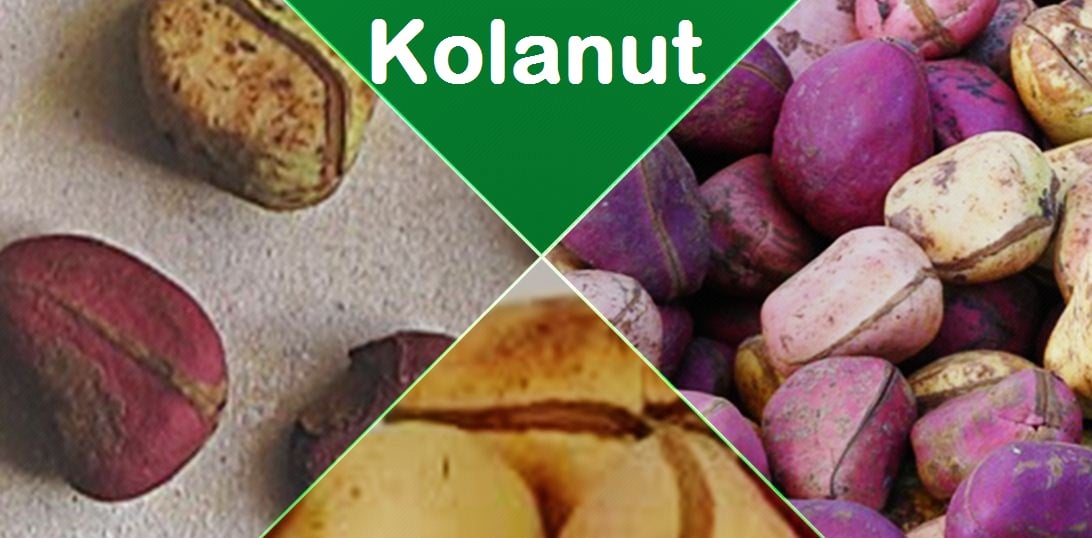Cotton Producing States In Nigeria And Its Cultivation Processes

Cotton has been a major cash crop in Africa, mainly in Nigeria, the areas cotton is grown in Nigeria is concentrated in the Savannah belts of the country which is the Northern & South Western Nigeria such as Kano, Kaduna, Oyo, Ondo, Kwara, Katsina, Jigawa, Ogun, Kebbi, Sokoto & Zamfara state.
Cotton belongs to the Gossypium family, it has a soft in texture, fluffy in nature and is a staple fibre that grows in a boll (boll tend to increase the dispersal of the seeds) around the seeds of cotton plants of the genus Gossypium in the family of Malvaceae.
Production of cotton in the country has been in existence since 1903, until 1974, the British Cotton Growers Association has been taking the lead.

Cotton plant is a shrub which is mainly grown in the tropical and subtropical areas including the Americas, Africa, and India. Before the oil boom in Nigeria, it has been one of the major cash crop exported to other countries, but due to the negligence of the government, the cultivation and exportation of cotton have reduced greatly.
There are recent fears that cotton might go extinct if proper and adequate measures aren't followed because what was usually been produced from cotton are now majorly imported and not only does it affect the agricultural aspect of the country it also discourages the farmers as their hopes of livelihood tend to be closing on them.
But all hopes aren't lost as the government is striving to revive back cotton seed production and in this sense, also advised farmers on quality cotton seeds, enough input, and other related vital information as it will help in generating a better outcome.
For planting indoor
- Planting of cotton is quite simple, you have to plant the cotton seed in a pot, it doesn’t require much water but enough to make it grow well and needs more sunlight at least for about 5 hours a day.
- After about 7-10 days, it begins to sprout and at this stage, the amount of water can gradually be increased to make the soil very moistened.
- Continue watering at intervals till it grows to maturity and the bolls begin to crack open.
For planting outdoor
- Prepare the soil for cultivation and makes sure that the soil is well moist.
- Plant the cotton seed into the ground 1-inch deep and also space the seeds out by 4 inches.
- After about 15 days, it will begin to sprout, allow it to stay for more 4-5 weeks after which it can be irrigated.
- Continue to water the plant at intervals of about 8-16 days and once the plant stops receiving water, it will begin to shed off its leaves due to dryness and this can be noticed on the 16th -18th weeks from the planting season.
- The dryness makes the bolls to split open making the cotton fibre visible, and the fibre begins to dry.
- When all the bolls have been cracked open, and the cotton fibre dried, it will then look like a fluffy ball. At this stage, the cotton is ready for harvest.
Cotton farming is a lucrative business just like oil palm, almost all its parts can be processed into one or multiple products.
Cotton and its uses can be dated from 5000 BC and are used mostly as a fabric.
- Cotton fibres mostly are spun into yarns or threads and used to make textiles.
- Cotton also is used to make yarn used in crochet and knitting.
- Cotton is used in coffee filters, fishing nets, tents, and explosives manufacturing.
- It is used in bookbinding and in paper industries.
- It can be used also for hygiene purposes like in the production of a cotton bud, cotton wool etc.
- Cotton has a seed and a fibre, and to make use of the seed, the cotton has to be ginned (removing the seed from the cotton with a cotton gin) to get the cottonseed proper.
The cottonseed contains oil which is extracted and processed using any suitable process, and then refined to remove unwanted materials, it can then be consumed by humans like any other vegetable oil or used as biodiesel when further processed.




